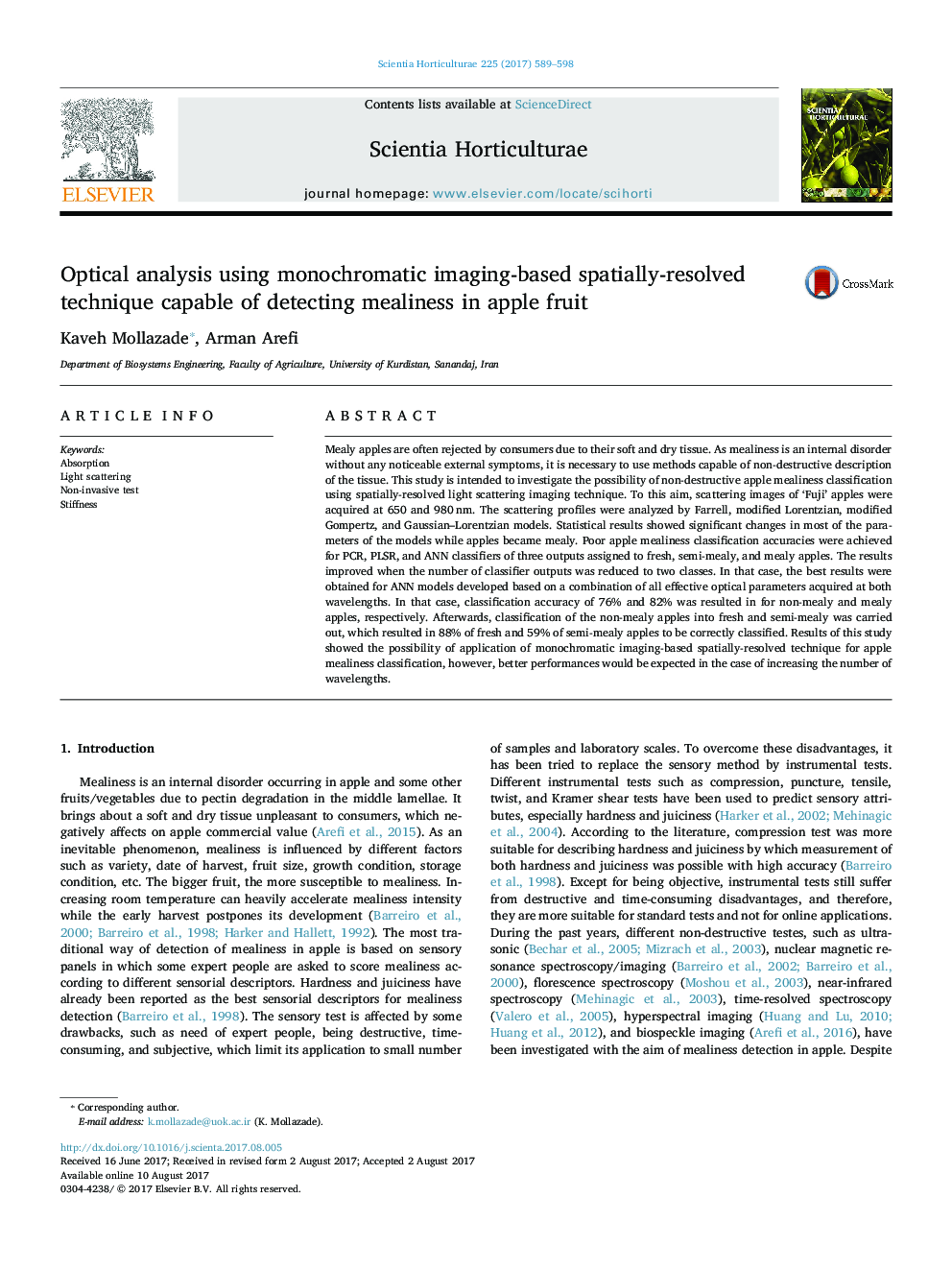| کد مقاله | کد نشریه | سال انتشار | مقاله انگلیسی | نسخه تمام متن |
|---|---|---|---|---|
| 5769307 | 1628773 | 2017 | 10 صفحه PDF | دانلود رایگان |
- Significant changes in μa and μs' were observed during apple mealiness development.
- Parameters of ML and GL at 650Â nm and MG at 980Â nm were more sensitive to mealiness.
- Direct classification of apples into fresh, semi-mealy, and mealy showed poor results.
- The best result in classification of apples into non-mealy and mealy classes was 79%.
Mealy apples are often rejected by consumers due to their soft and dry tissue. As mealiness is an internal disorder without any noticeable external symptoms, it is necessary to use methods capable of non-destructive description of the tissue. This study is intended to investigate the possibility of non-destructive apple mealiness classification using spatially-resolved light scattering imaging technique. To this aim, scattering images of 'Fuji' apples were acquired at 650 and 980Â nm. The scattering profiles were analyzed by Farrell, modified Lorentzian, modified Gompertz, and Gaussian-Lorentzian models. Statistical results showed significant changes in most of the parameters of the models while apples became mealy. Poor apple mealiness classification accuracies were achieved for PCR, PLSR, and ANN classifiers of three outputs assigned to fresh, semi-mealy, and mealy apples. The results improved when the number of classifier outputs was reduced to two classes. In that case, the best results were obtained for ANN models developed based on a combination of all effective optical parameters acquired at both wavelengths. In that case, classification accuracy of 76% and 82% was resulted in for non-mealy and mealy apples, respectively. Afterwards, classification of the non-mealy apples into fresh and semi-mealy was carried out, which resulted in 88% of fresh and 59% of semi-mealy apples to be correctly classified. Results of this study showed the possibility of application of monochromatic imaging-based spatially-resolved technique for apple mealiness classification, however, better performances would be expected in the case of increasing the number of wavelengths.
Journal: Scientia Horticulturae - Volume 225, 18 November 2017, Pages 589-598
